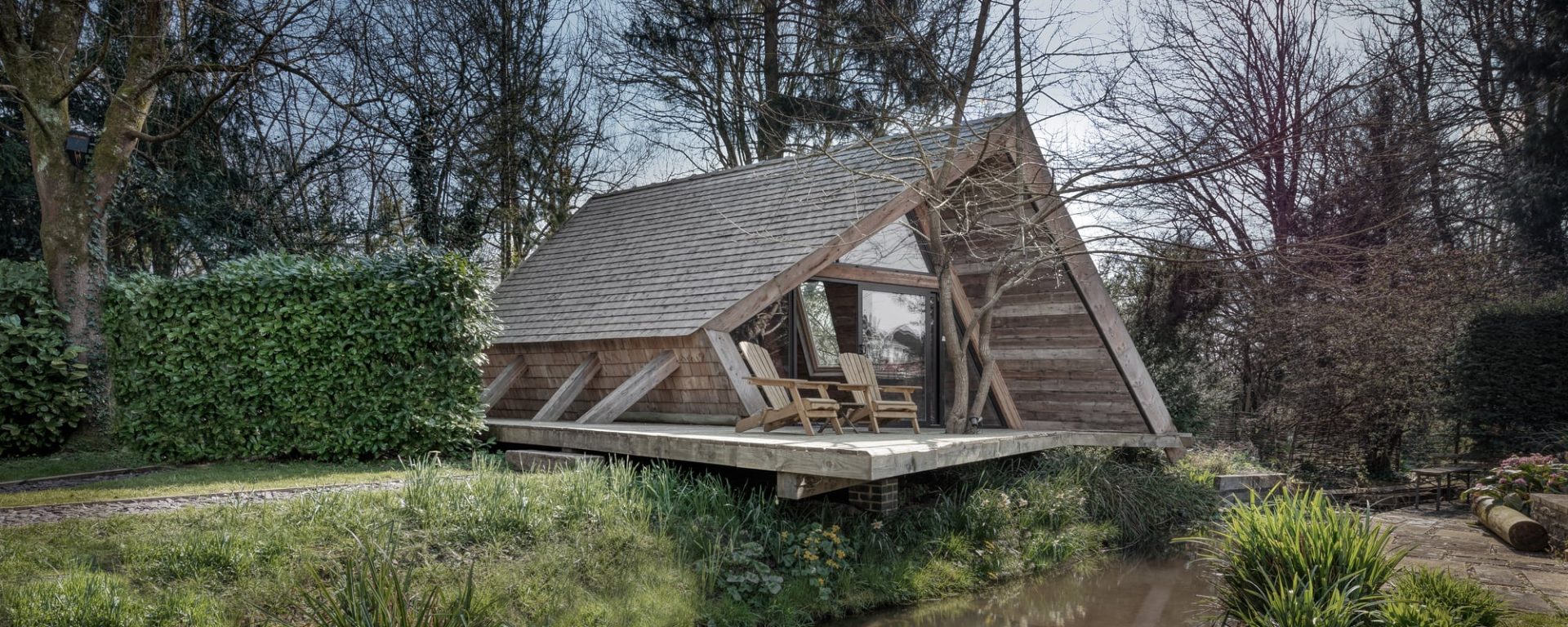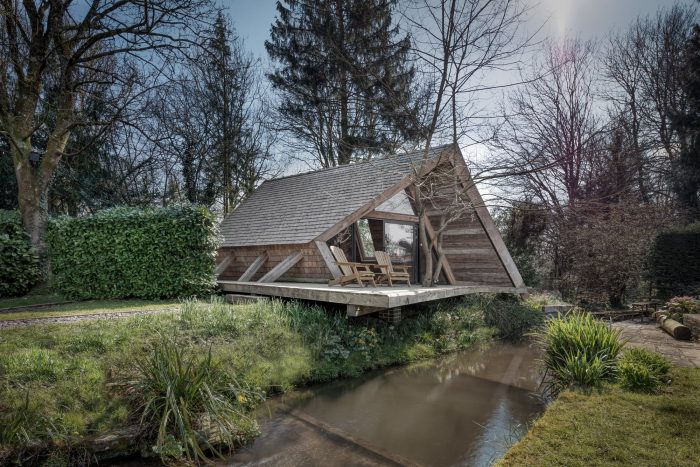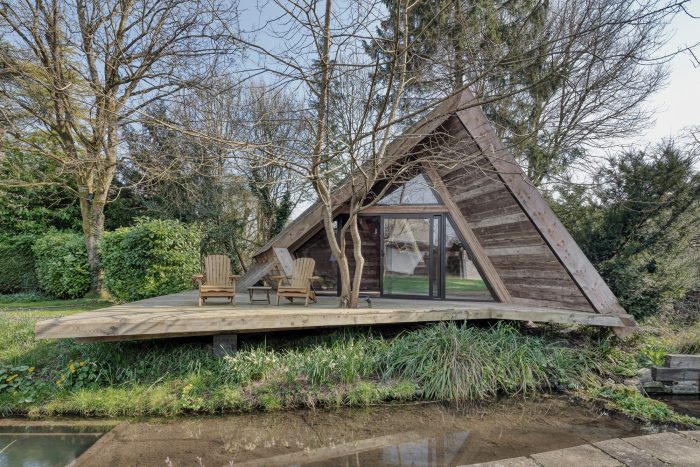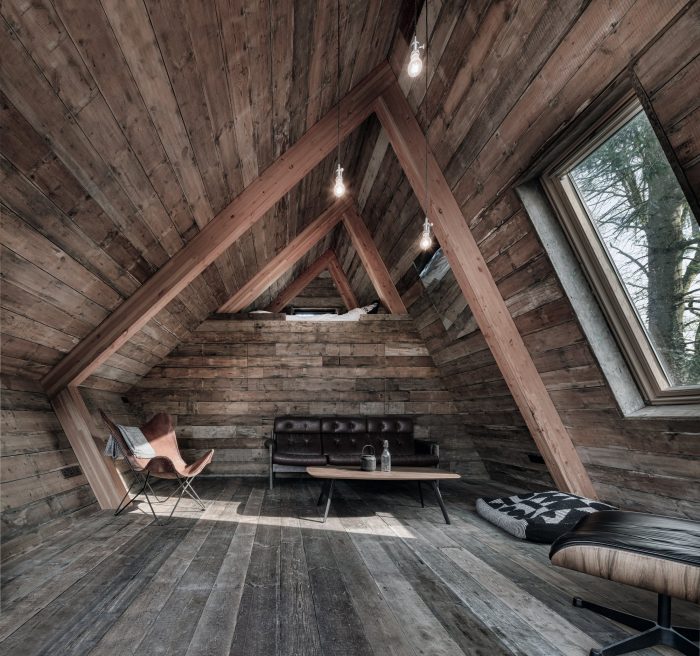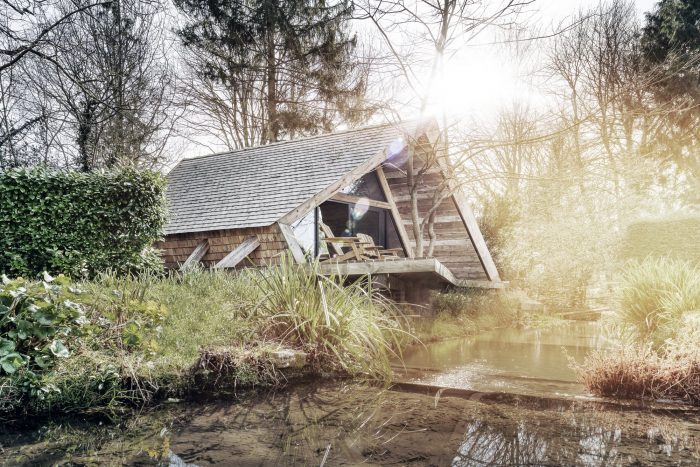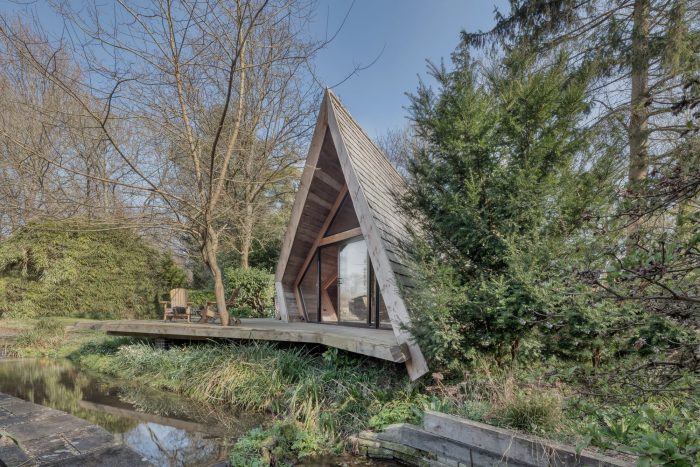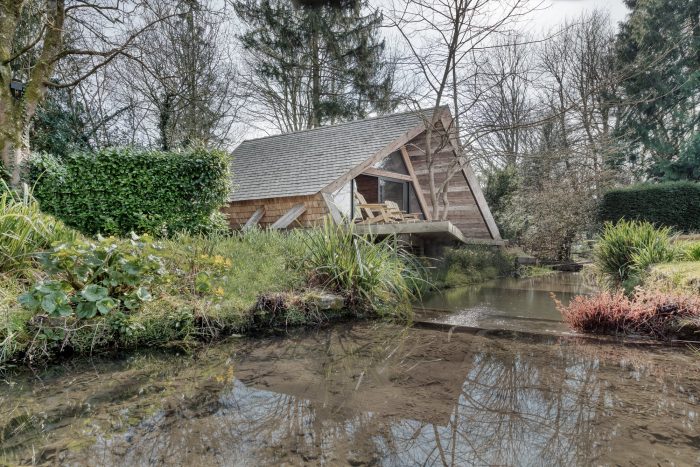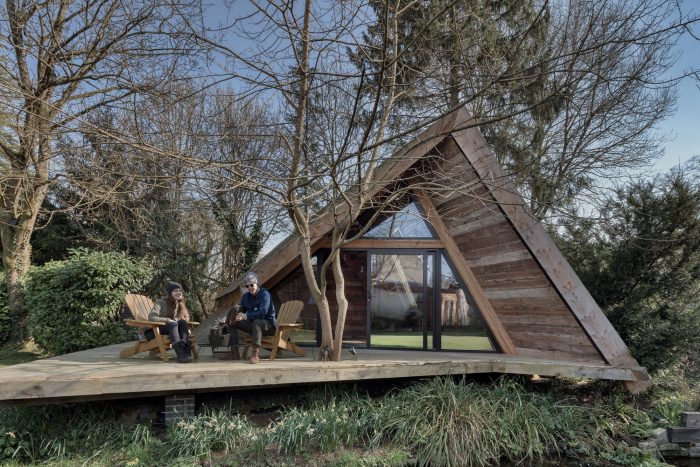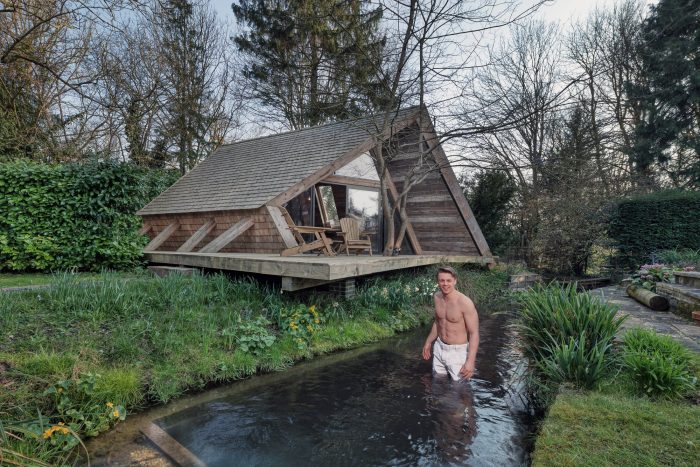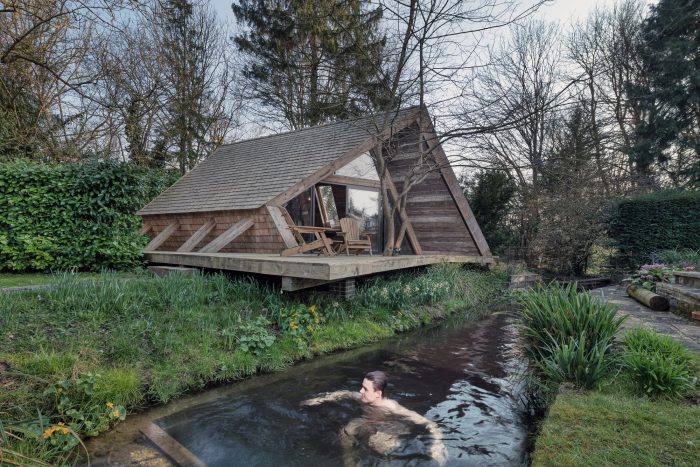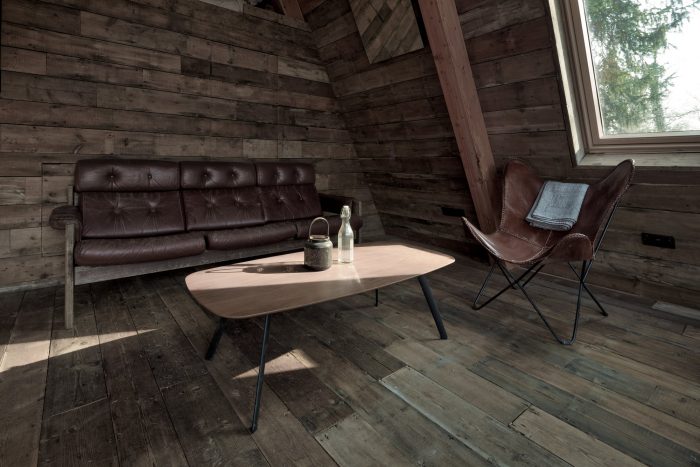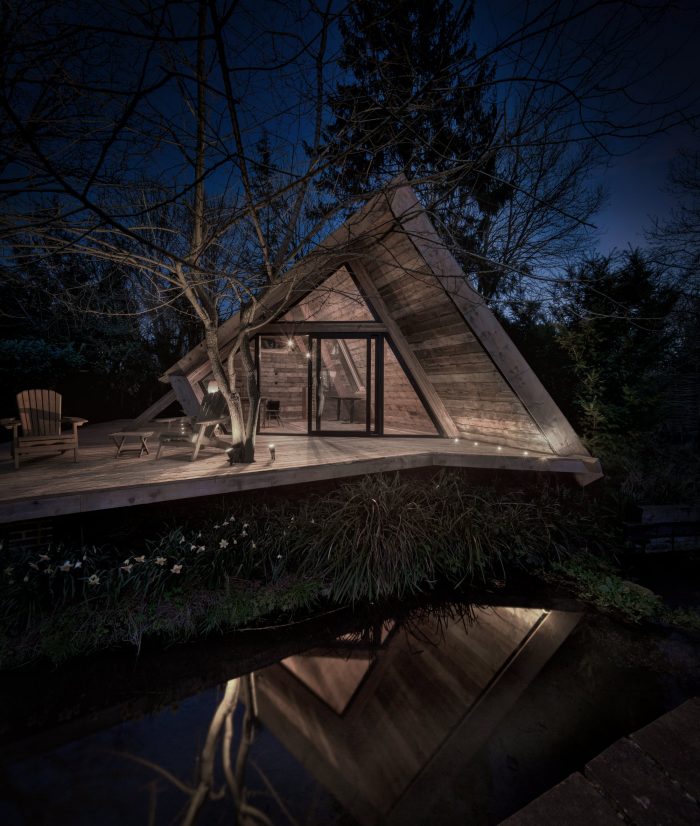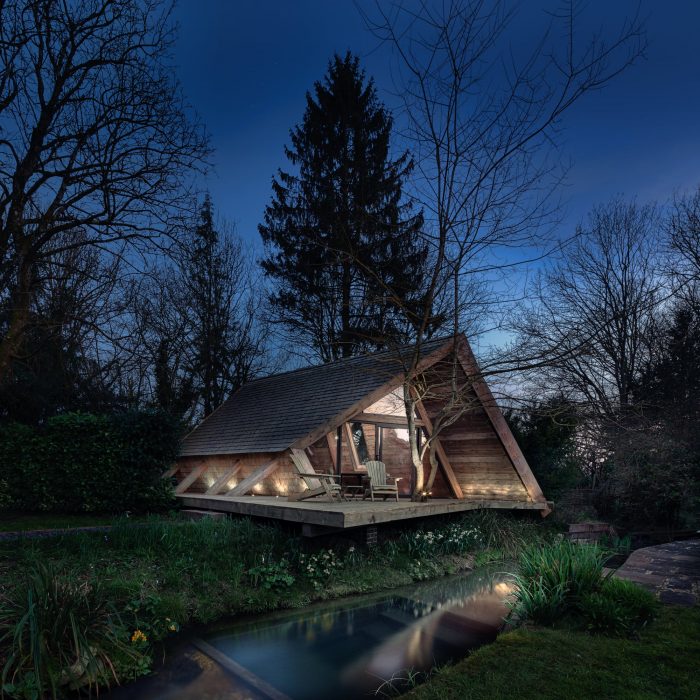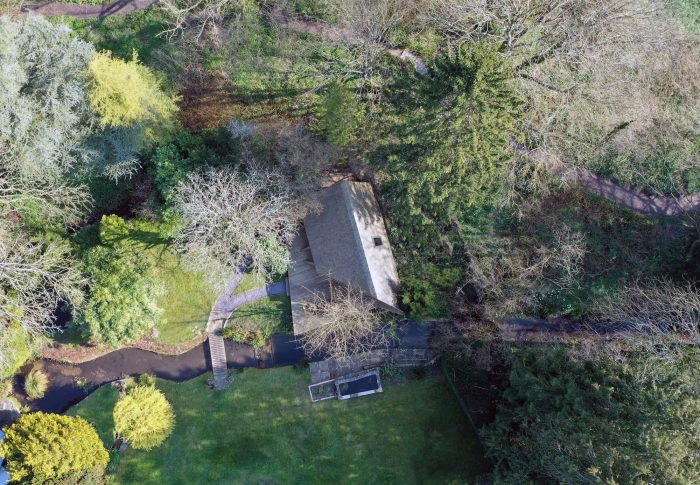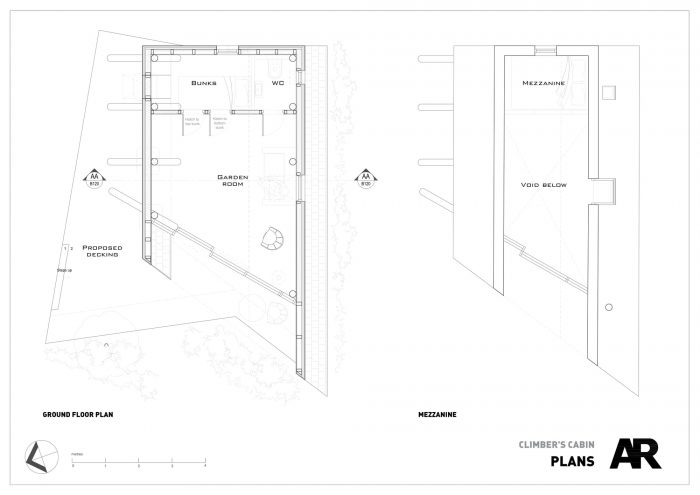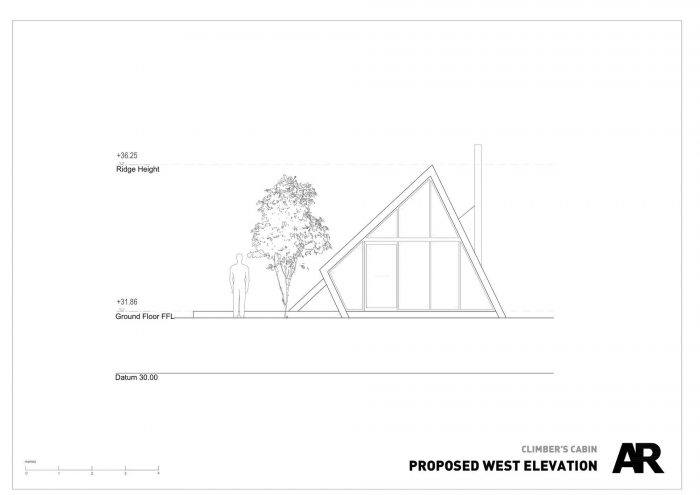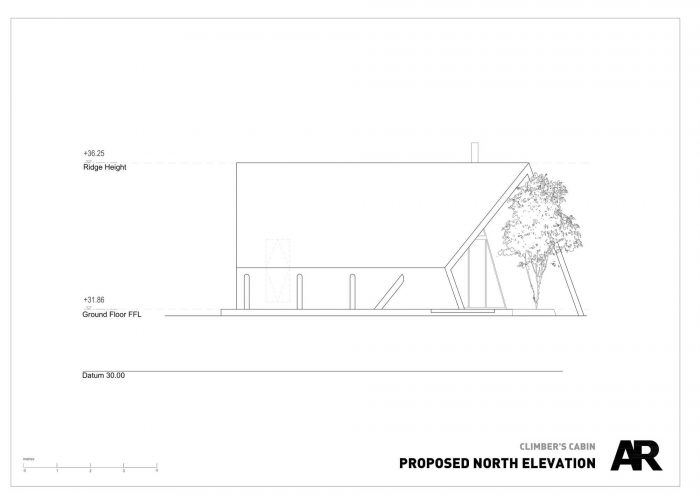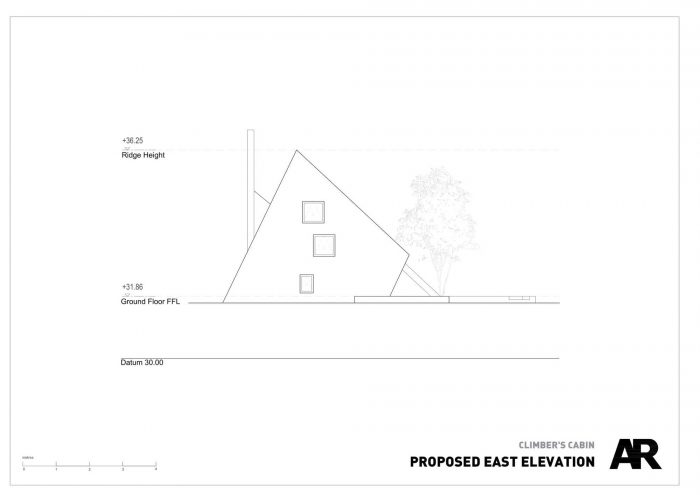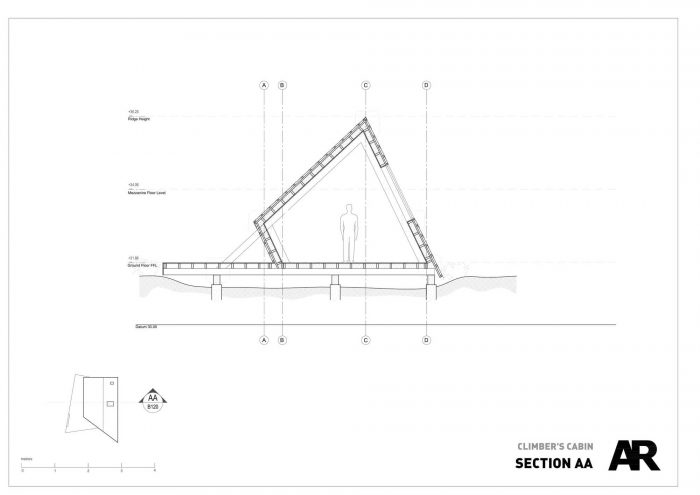登山者的小屋是一个新项目,最近由获奖的、位于温彻斯特的AR设计工作室完成。它位于落叶林地的边缘和一条小溪之间,目的是作为客人的住宿,并作为孩子们长大后的一个独立空间。
The Climber’s Cabin is a new project recently completed by award-winning, Winchester-based Architects AR Design Studio. Sitting between the edge of deciduous woodland and a stream, its purpose is to serve as guest accommodation and as an independent space for the children as they grow older.
我们的任务是为他们的房子创造一个紧凑的、离网的、自建的辅助空间。由于客户在建筑方面没有什么经验,设计方案的一部分是要使小屋能够自建,利用简单的建筑方法和可持续的、来自当地的材料,使许多工作能够由客户在朋友的支持下完成。
The brief was to create a compact, off-the-grid, self-build ancillary space for their house. With the client having little experience in construction, part of the brief was to design the cabin such that it could be self-built, making use of straightforward construction methods and sustainable, locally sourced materials that would allow much of the work to be carried out by the client with support from friends.
由于面积只有25平方米,而且要睡四个人,所以空间非常有限。小屋一开始是一个6×4米的盒子,然后以一种务实的方式进行操作,以最大限度地利用可用的地板面积。首先,屋顶是倾斜的,以便为夹层腾出空间。然后在一侧增加体积,以提供存储空间,而不影响地板空间。最后,前面的桁架被旋转到西北方向,以便为晚间的太阳创造一个陷阱,并允许一个小的遮蔽露台。
At just 25sqm and a brief to sleep four, space was at a premium. The cabin started out as a 6x4m box which was then manipulated in a pragmatic manner to maximize the available floor area. To begin with, the roof was pitched in order to make space for a mezzanine. Then the volume was increased on one side to provide space for storage without compromising floor space. Finally, the front truss was rotated towards the northwest in order to create a trap for the late evening sun and allow for a small sheltered terrace.
一个大的露台环绕着小屋的一侧,在温暖的月份里使用。前面是一个适应性很强的生活空间,利用了大窗户的优势,后面有两个儿童床,夹层里有一张双人床。较小的窗户为睡眠空间提供了林地的框架景观。孩子们的床铺可以直接通向露台,将他们自己的个人空间与花园连接起来。
A large terrace wraps around the side of the cabin for use during the warmer months. An adaptable living space to the front takes advantage of the large picture window while at the rear there are two children’s bunks with a double bed over at the mezzanine level. Smaller windows provide framed views of the woodland from the sleeping spaces. The children’s bunks have direct access to the terrace connecting their own personal space with the garden.
小屋是围绕着四个A型结构的桁架建造的。这些都是在现场外制作的,并以类似于谷仓的方式竖立起来,放置在简单的垫子地基和砖墩上。回收的脚手架木板构成了内部装饰,而当地的雪松木瓦则覆盖了外部。中间是一层厚厚的隔热层,确保小木屋全年保持温暖,并将其加热要求降到最低。
The cabin is constructed around four A-Frame trusses. These were fabricated off-site and erected in a similar fashion to a barn raising, resting atop simple pad foundations and brick piers. Upcycled scaffold boards form the interior finishes while locally sourced cedar shingles clad the exterior. Between is a thick layer of insulation, ensuring that the Cabin remains warm all year round and minimizing its heating requirements.
这种可持续的建筑方法使建筑具有非常自然的质感,并强调了与周围林地的关系。其结果是一个宁静的空间,利用天然材料、玻璃和它的背景,创造出与周围林地的真正联系感,并提供一个逃离日常的小空间。
This sustainable approach to construction gives a very natural texture to the building and emphasizes the relationship with the surrounding woodlands. The result is a tranquil space that makes use of natural materials, glass, and its context to create a real sense of connection to the surrounding woodlands and provide a small escape from the everyday.
Architects: AR Design Studio
Area : 25 m²
Year : 2021
Photographs :Martin Gardner
Manufacturers : Herman Miller, Buckland Timber, Smart Systems
Structural Engineer : AWA Engineers
Architect : Jonathan Oswald
Director & Architect : Andy Ramus
Country : United Kingdom

